Conditions
Arthritis of the Hand & Wrist
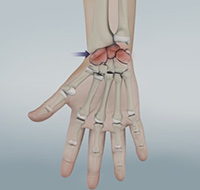
Arthritis is an inflammatory condition of the joints. There are several types of arthritis and the most common type is osteoarthritis or wear-and-tear arthritis. Arthritis affects various joints in the body and the arthritis in the hand affects the joint at the base of the thumb. Arthritis may also affect the joints of other digits and the symptoms include swelling, pain, stiffness and malformation, all of which interfere with the use of the hand.
Wrist Pain

The wrist is a commonly injured joint in the body. Problems include sprains and strains as well as fractures which can occur with lifting and carrying heavy objects, while operating machinery, bracing against a fall, or from sports-related injuries.
Some of the common wrist injuries include:
- Sprains and Strains
- Ligamentous Injuries
- Fractures
- Repetitive Trauma Syndrome
- Carpal Tunnel Syndrome
Carpal Tunnel Syndrome

Carpal tunnel syndrome is a common, painful, progressive condition that is caused by compression of the median nerve at the wrist area.
Symptoms of Carpal Tunnel Syndrome
Common symptoms of carpal tunnel syndrome include numbness and tingling sensation in all the fingers except the little finger; pain and burning sensation in hand & wrist that may radiate up the arm and elbow; and weakness in hand with diminished grip strength.
Elbow Injuries
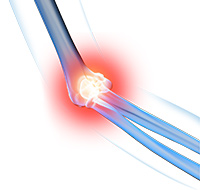
Fracture is a common injury to the elbow. Elbow fractures may result from a fall onto an outstretched wrist, a direct impact to the elbow or a twisting injury. Elbow fractures may cause severe pain, swelling, tenderness and painful movements. If a fracture is suspected, immediate intervention by your doctor is necessary. Surgery is often required if a bony displacement is observed.
Elbow Arthritis
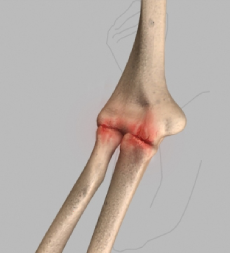
Although the elbows are not weight-bearing joints, they are considered to be most important for the functioning of the upper limbs. Hence, even minor trauma or disease affecting the elbow may cause pain and limit the movements of the upper limbs. Arthritis is one of the common disease conditions affecting the elbow joint.
Ulnar Nerve Entrapment (Cubital Tunnel Syndrome)
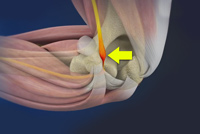
Cubital Tunnel Syndrome is a condition characterized by compression of the ulnar nerve in an area of the elbow called the cubital tunnel.
Tennis Elbow

Tennis elbow is the common name used for the elbow condition called lateral epicondylitis. It is an overuse injury that causes inflammation of the tendons that attach to the bony prominence on the outside of the elbow (lateral epicondyle).
Biceps Tendon Tear at the Elbow
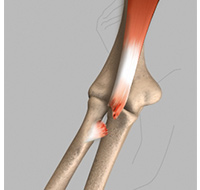
The biceps muscle located in the front of the upper arm allows you to bend the elbow and rotate the arm. Biceps tendons attach the biceps muscle to the bones in the shoulder and in the elbow.
Biceps tear can be complete or partial. Partial biceps tendon tears will not completely break the tendon. Complete tendon tears will break the tendon into two parts.
Fractures of the Hand and Fingers
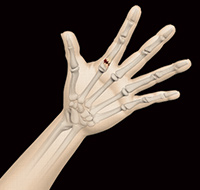
The hand is one of the most flexible and useful parts of our body. Because of overuse in various activities, the hands are more prone to injuries, such as sprains and strains, fractures and dislocations, lacerations and amputations while operating machinery, bracing against a fall and sports-related injuries.
Wrist Fractures
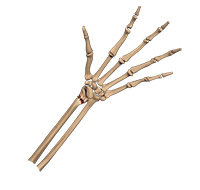
The wrist is comprised of two bones in the forearm, the radius and ulna, and eight tiny carpal bones in the palm. The bones meet to form multiple large and small joints. A wrist fracture refers to a break in one or more of these bones.
Adult Forearm Fractures
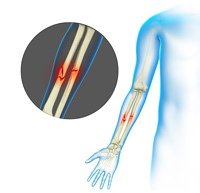
The forearm is made up of 2 bones, namely, the radius and ulna. The primary function of your forearm is rotation i.e., the ability to turn your palm up and down. The fracture of the forearm affects the ability to rotate your arm, as well as bend and straighten the wrist and elbow. The breaking of the radius or ulna in the middle of the bone requires a strong force and it is most commonly seen in adults. In most of the cases, both bones are broken during a forearm fracture.
Forearm Fractures in Children
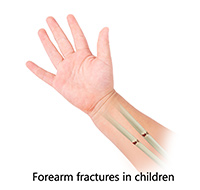
The radius (bone on the thumb side) and ulna (bone on the little-finger side) are the two bones of the forearm. Forearm fractures can occur near the wrist, near the elbow or in the middle of the forearm. Apart from this, the bones in children are prone to a unique injury known as a growth plate fracture. The growth plate, which is made of cartilage (flexible tissue) is present at the ends of the bones in children and helps in the determination of length and shape of the mature bone.
Elbow Fractures
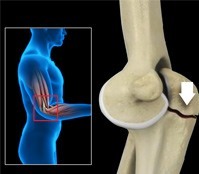
Three bones, the humerus, radius and ulna, make up the elbow joint. Elbow fractures may occur from trauma, resulting from various reasons; a fall on an outstretched arm, a direct blow to the elbow, or an abnormal twist to the joint beyond its functional limit.
Distal Humerus Fractures of the Elbow
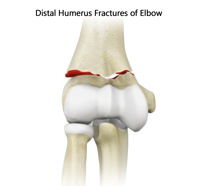
The elbow is a region between the upper arm and the fore arm. The elbow joint is made up of 3 bones. The distal (lower) end of the humerus bone in the upper arm joins with the radius and ulna bones in the fore arm to form the elbow joint. The elbow joint is very important for the movement of your arms and for coordination of daily activities. Injury in the distal humerus can cause impairment in the function of the elbow joint.








